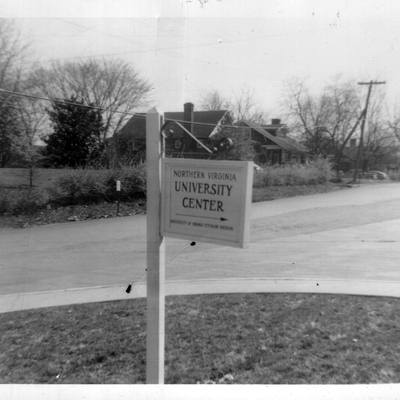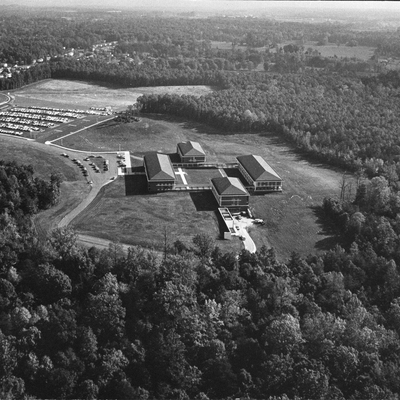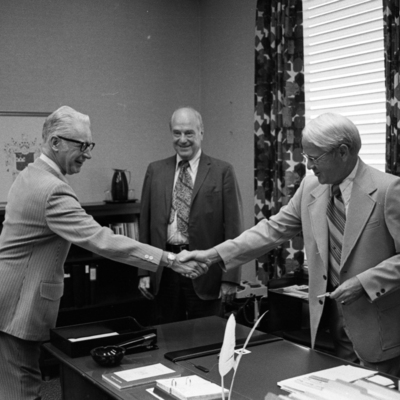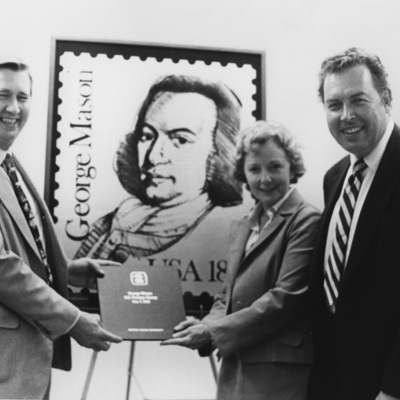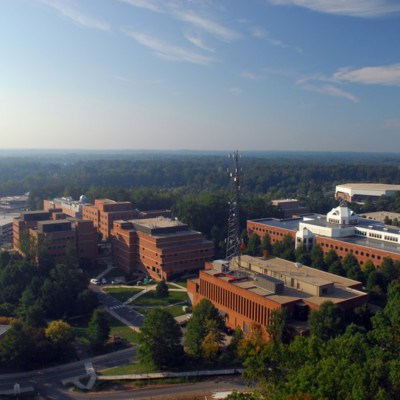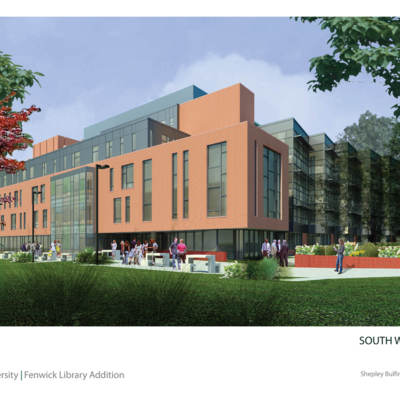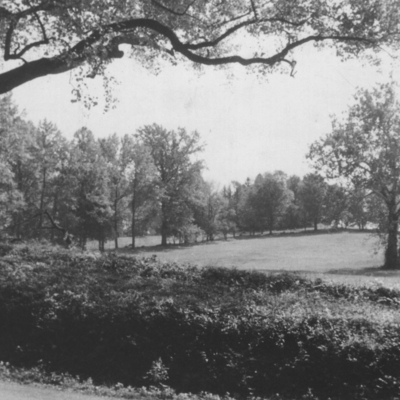Sectionalism
It has been a commonly-held belief among many individuals actively involved in Virginia politics and government that the Northern Virginia region differs from the rest of the Commonwealth. The region is often portrayed as having higher median incomes, a more vibrant technology sector, more diverse national backgrounds among its population, and a tendency to lean more to the liberal spectrum in terms of politics than the other parts of Virginia, among other characteristics. [1] Though there is no official designation of what constitutes Northern Virginia, it has been minimally defined as the area containing the following governmental units: Arlington, Fairfax, Loudoun, Prince William, and Stafford counties, and the cities of Arlington, Falls Church, Fairfax, Manassas, and Manassas Park, though other counties and cities have also been assigned to it from time to time. [2]
It has been suggested by many through the years that George Mason University's birth and early development took place in an environment in which a prickly relationship existed between the citizens of the Northern Virginia region and those from the rest of the Commonwealth with regard to politics and government. Individuals intimately familiar with the growth and development of George Mason University have claimed that as a result, this Northern Virginia institution has faced, to varying degrees, opposition to its development by individuals and groups from other parts of the Commonwealth since its inception. Some insist that, though perhaps more subtly, this condition continues today. Serious students of the history of the University, including C. Harrison Mann, Jr., one of its founding fathers, have documented this phenomenon in detail in their works on Mason's origins.
Mann, in his unpublished manuscript of the university's history, describes what he observed as an elected representative (1954-1970) from Arlington in the Virginia General Assembly at Richmond. He suggests that there existed:
a strong emotional influence on men...There arose a feeling in the minds of Virginia that this community [Arlington] and indeed, all of Northern Virginia was not like the remainder of the state, that it had become occupied by a large number of outsiders who had nothing in common with the rest of the Commonwealth...The area was inhabited by a bunch of carpetbaggers and radicals. [3]
These “outsiders” first immigrated to the area during the 1930s and 1940s to work in the expanded federal government during the Roosevelt administration and later in the area's burgeoning defense and technology industries.
A major cause of friction between Northern Virginia and the Virginia political establishment in Richmond and elsewhere centered in the 1950s around Mann's hometown, Arlington, its insistence on expanded local governmental powers, and what it did with them. Arlington would be the first county in Virginia to have a county manager and an elected school board. These initiatives, Mann recalls, were alien to the rest of Virginia. [4] Virginia was at the time, and though to a lesser degree still remains today, governed by the Dillon Rule, a 19th-century axiom which states that local governments derive their powers, and in fact their very existence from the state legislatures, and as a result must defer to them on issues of governance. Most importantly, and in the context of the establishment of a college in Northern Virginia, ill feelings toward Arlington and its leaders came to a head when its elected school board initiated plans to desegregate its public schools shortly after the Supreme Court decision in Brown vs. Board of Education in 1954. [5]
Virginia's Tenth Congressional District in 1956 comprised the cities of Alexandria and Falls Church and the counties of Arlington and Fairfax. By virtue of its having Arlington as part, the Tenth was often thought of as a hotbed of radicalism in other parts of the Commonwealth. [6] Geography and politics would both figure heavily in the site-selection controversy, which will be discussed in a later part of this chapter.
Mann himself was associated with George Mason University from 1949 until his death in 1977. His manuscript history of George Mason University only covers the period 1949 to 1958. It is, however an intricately detailed accounting of events during that period. His recollection of the sequences of specific events, personalities, conversations, and his personal feelings from that period are remarkable and make for a compelling read. Unfortunately, his death came less than a year after the completion of this part of the manuscript. His narrative describes the period as one which pitted in his words “the Northern Virginians” against certain members of the University of Virginia Board of Visitors, certain political groups, and to a lesser degree, members of the Virginia Legislature and other individuals seeking to disrupt or worse derail the establishment of an institution of higher education in Northern Virginia.
Michael Ronald Sorrell, in his 2002 University of Virginia dissertation entitled Extending Public Higher Education into Northern Virginia: The Formative Years of George Mason University, 1949-1972, seeks to understand the perceived political conditions in the Commonwealth during this period. In his chapter entitled “Northern Virginia versus Southern Virginia,” Sorrell explores the roots of sectionalism in Virginia. He suggests they can be traced back to the Civil War and later the Reconstruction era, when Arlington and Alexandria were considered “Union territory.” Even nearly one hundred years after the War, it would not be unusual to hear a southern member of the General Assembly suggest that Virginia should “give Arlington and Alexandria back to the District of Columbia.” [7] Sorrell adds that some Virginians would have characterized Arlington County's elected school board as “infiltrated by Northerners.” It would later be “reprimanded for its disloyalty,” in this case exercising its option to desegregate its schools, by legislation in the General Assembly that would dissolve its elected board. [8]
Mann suggests that George Mason's early development would be affected directly by individuals who believed that perhaps the northern part of the Commonwealth should not be rewarded with a college of its own, or at least not a conveniently located one. This appeared to be the case during the selection of a permanent site for the branch college which was authorized by the General Assembly in early 1956.

